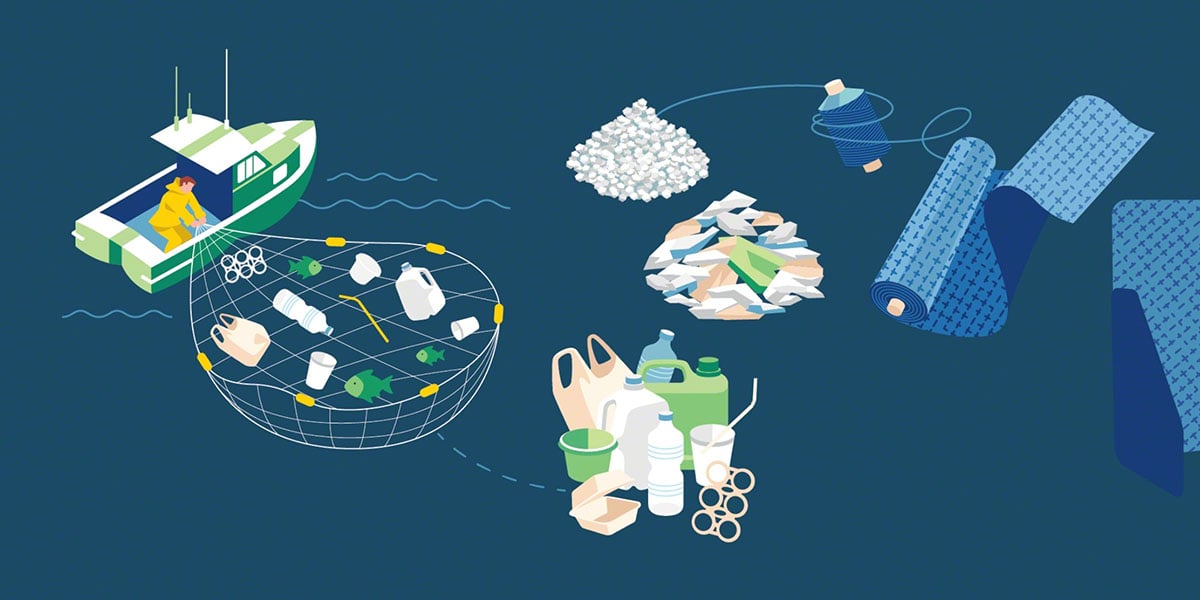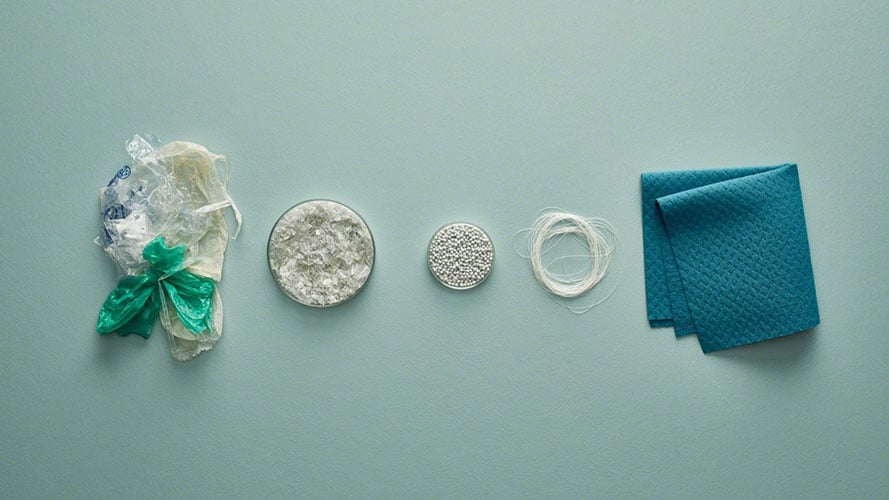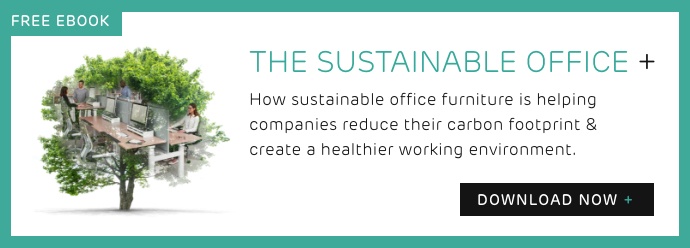Spurred by tighter regulation, the demands of a more eco-aware workforce and a growing environmental crisis, employers are making more sustainable office furniture choices. But are they as far reaching as they could be?
As the Ellen Macarthur Foundation, champion of the Circular Economy points out, the environmental impact a piece of furniture will have is dependent on what happens at the very beginning of its life cycle:
“Waste and pollution are not accidents, but the consequence of decisions made at the design stage, where around 80% of environmental impacts are determined. By changing our mindset to view waste as a design flaw and harnessing new materials and technologies, we can ensure waste and pollution are not created in the first place."

So how do these initial decisions dictate the impact a product will have on the world?
Let’s start at the end - where does furniture end up & why?
Worries about landfill often rank high when we’re thinking about the impact of furniture on the environment. Over the years the figures have been hair-raising. According to the Waste & Resources Action Programme (WRAP) 1.2 million office desks and 1.8 million office chairs end up in UK landfill each year. In Europe as a whole, it seems, 80-90% of all furniture ends its life in this way. While in the US 9 million tonnes of office equipment is condemned to an ignoble afterlife on rubbish tips every year. And this waste is only likely to continue as businesses re-configure office space in the wake of Covid-19.
What’s driving your furniture to the tip?
Much of the past waste in office furniture products has been driven by ‘built in obsolescence’. A culture of ‘fast furniture’ that has made a virtue of cheap, insubstantial and disposable products. It's a culture that has driven trends and infinite buying cycles. Fast furniture is often constructed with:
- Cheaper materials from unsustainable sources (e.g. particle wood, non-recyclable plastics)
- Manufacturing practices that generate higher than average carbon emissions (laminates, chemical resins)
- Parts sourced and shipped from far away increasing carbon footprint
- 'Fixed designs' that do not feature the use of replaceable components
- Materials that cannot be stripped out and recycled at their end of life
The required low prices of these end products are enabled by the choice of particular sourcing, construction and transportation methods, essentially 'locking in' environmental damage at their design and planning stage.
And choosing less sustainable furniture options will only serve to increase already significant carbon footprints in the future. If the average task chair generates 72 kilos of CO2 over its lifespan, having to replace it more frequently compounds and repeats those emissions in a vicious cycle of ‘pollute, discard and replace’.
When bad design makes us sick
But it is not just the contribution to total carbon emissions and landfill that can drive environmental damage.
What about the manufacturing processes that are contributing to the toxicity of our environments and endangering the health of workers? We spoke to Diane Karner design team leader about the dangers lurking within certain design choices:
“Thankfully chrome has fallen out of fashion recently, it contributes heavily to environmental pollution but also poses a high risk to the health of factory workers who are exposed to inhaling toxic compounds during production. Whereas powder-coated metals are inherently non-emitting and don’t even require any VOC emissions testing (with some exemptions)”
Choices around the treatment of foams and fabrics can also have significant health implications for those producing and consuming them:
"Many manufacturers apply toxic chemical flame retardants to make the foams fire resistant. Fire retardants pose a serious risk to our health and are actually banned in other European countries. Some of these chemicals have been linked to cancer, delayed development and thyroid disruption. They can bioaccumulate in fat and result in food chain contamination, including human milk."
Karner reminds us the choices that suppliers make, and the requirements of customers, can all help affect change at the manufacturing level to bring safer, more environmentally friendly products to the market:
"It is usually not possible to ‘specify’ the foam, but we can challenge our suppliers and manufacturers to use foam that is PBDE flame retardant free and contains Low Emission (VOCs) for indoor air quality and specify products from suppliers who use foam with an accredited certification."
Things are changing - but we can do more
A greater understanding and urgency around the environmental pressures driven by unsustainable furniture (as well as pressures from a more engaged workforce) has caused businesses to prioritise more ethical choices in their fit-outs. As a result companies are choosing furniture:
- Built with more sustainability in mind (with recyclable materials & less polluting manufacturing processes)
- Choosing equipment that can be more effectively maintained (cleaned, replaced with spare parts etc) to reduce frequency of replacements
- Supported with schemes to offset carbon footprint - such as tree planting
- Supported with more buy-back and other recycling inititiatives
All these are good examples of how potential environmental damage can be offset through better design, more careful procurement and commitment to extending the lifecycle of chosen products on all sides of the buying equation. And manufacturers and suppliers are doing more to facilitate responsible decision-making to drive less damaging choices:
Some products are certified Cradle to Cradle or come with an Environmental Product Declaration (EPD), making it easy for you to assess how environmentally friendly they are.
Still, is there even more that both manufacturers and customers can do to keep the environmental agenda moving forward? As the Ellen Macarthur Foundation point out, the ultimate aim could be a completely 'circular economy' where products and materials are 'kept in use', potentially forever. In the future, they hope carbon negative businesses will use 'waste' in new and innovative ways.
This means not just using wood from forests that are replanted, but not using ‘virgin’ wood at all. Not just using plastics that can be recycled, but extracting plastics already in the environment and reusing them. Two Steelcase projects have highlighted exactly these possibilities:
Steelcase have pioneered sustainable design and build practices, including building products with 'planked-veneer', (oak and walnut pieces leftover from other processes) that cannot be used in other products.
In their 'Ocean to Office' initiative Steelcase are using plastics dumped in the sea to weave new, durable and aesthetically unique materials for acoustic screening:
Beyond its positive environmental impact [the fabric] also successfully met the need of organizations and designers for an updated, compelling screen and panel fabric. Today, screens have evolved to fill a more architectural and visual role in the workplace, contributing to the look and vibe of the office while still providing visual or acoustic barriers where needed.

The environmental impact of office furniture choices is a major concern in today's world. Manufacturers, suppliers and their customers can all play their part in requesting and selecting the solutions that not only reduce this impact, but can actually begin to reverse decades of damaging choices.










